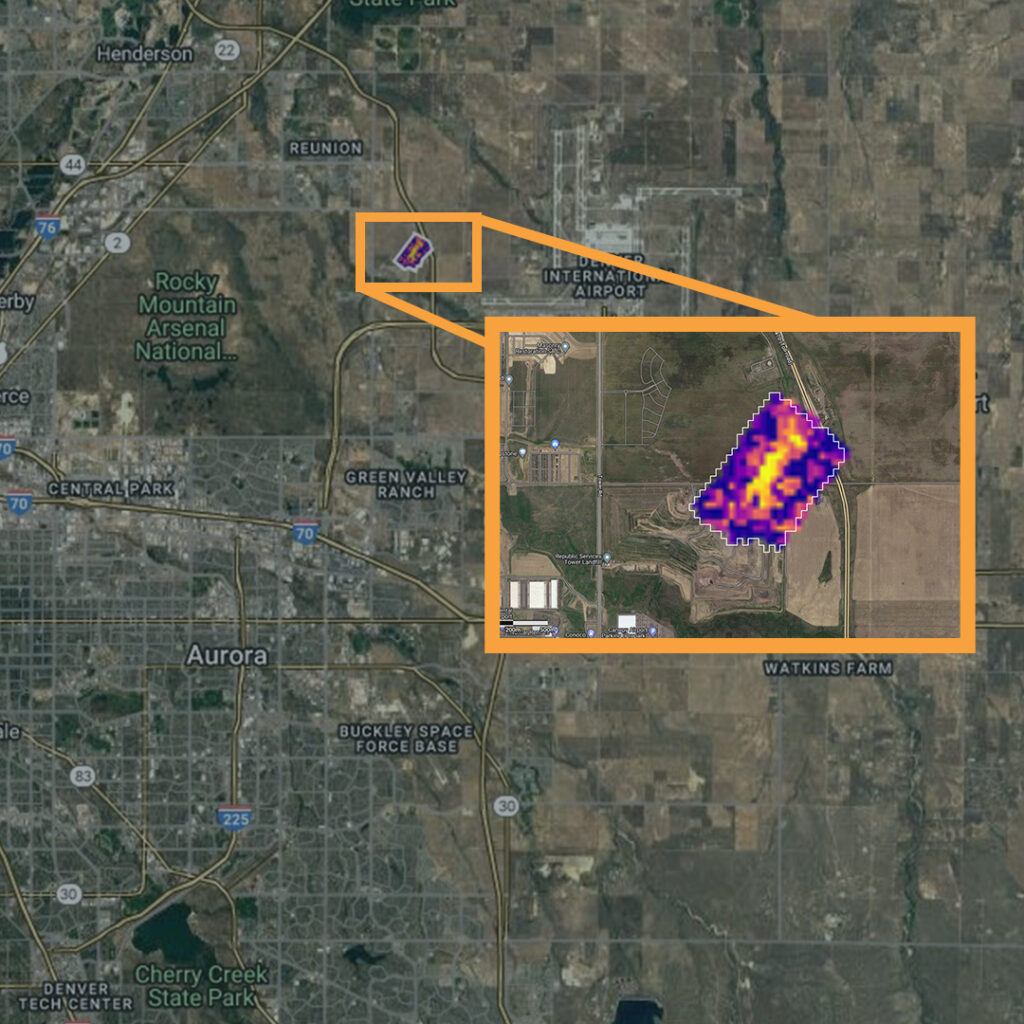TRANSCRIPT
James Lawler: [00:00:00] Welcome to Climate Now, a podcast that explores and explains the ideas, technologies, and the practical solutions that we’ll need to address the global climate emergency. I’m your host, James Lawler, and you’re listening to Climate News Weekly. As part of today’s climate news recap, we want to tease an upcoming groundbreaking report on carbon dioxide removal, or CDR, led by the Lawrence Livermore National Laboratory in collaboration with scientists from more than a dozen institutions.
The report, titled Roads to Removal: Options for Carbon Dioxide Removal in the United States, analyzes how the U.S., might reach 1 gigaton of carbon dioxide removal per year by 2050. To give us a preview of what the report covers and why it’s needed, we invited the lead scientist on the report, Senior Staff Scientist Jennifer Pettt-Ridge. Jennifer, welcome.
Jennifer Pettt-Ridge: Hi.
James Lawler: So, tell us about this report. What is Roads to Removal? What does that refer to? Why is this an interesting thing to put out into the world?
Jennifer Pett-Ridge: We are in the middle of a climate crisis [00:01:00] and part of the solution in removing the greenhouse gasses from our atmosphere that are causing these massive disruptions is not just, uh, what we call decarbonization or emitting less, but it’s also going to involve removing CO2 directly from the atmosphere.
So this report is all about that process. It’s about a sort of 10 or 15 percent of the whole problem, but it’s a really important part of the solution to get us to what we call net zero by the year 2050.
James Lawler: And so what makes this report different from any number of other studies that have looked at carbon dioxide removal solutions?
Jennifer Pett-Ridge: Well, I would say several things. The first being that this analysis is what we call bottom up. We have taken data that mostly has already existed, collected across the country, and believe it or not, at the county level. So really, really high resolution for the entire nation. And that tells us how much [00:02:00] carbon dioxide removal we could achieve by a certain date. And what would the cost be per ton?
And to do that at the county level has just never been done anywhere. But that is particularly powerful because we’ve shown that the, the solutions, as it were, the type of carbon dioxide removal are going to be really different if you’re in New York versus Wyoming versus Florida.
We overlaid a lot of different constraints, different resources. We needed to make sure there was land available, uh, renewable energy. And then probably most important, we analyzed the environmental and equity characterization of what we’re proposing and that had not been overlaid in, in the way that we’ve done it.
James Lawler: So essentially the report looks county by county across the entire United States at a range of carbon dioxide removal processes and technologies with the aim of identifying what are the most efficient methods in terms of cost to maximize that CO2 removal. So [00:03:00] what were the range of CO2 removal strategies that your team looked at and what did you find in terms of removal potential and cost?
Jennifer Pett-Ridge: So we looked at everything from what we call ecological solutions, and that means growing more trees or managing forests that we already have better, managing agricultural lands better, thinking about planting perennial grasses that might have deep roots that stuff carbon deep in the ground.
And then we looked at the more technologically oriented processes, for example, gathering up some biomass from carbon crops or even municipal waste that we currently truck over to the landfill. What if we took all of those kind of biomass residues and use them in the process of carbon capture and then storage, and that means converting them to either a fuel like hydrogen biochar, bio oil, but doing CO2 capture during that process [00:04:00] and storing that CO2 deep below ground.
And then finally, and the most technology oriented process, we looked at direct air capture, literally vacuuming CO2 out of the air and then condensing that CO2 and storing it a mile deep below the surface. So, when we looked at all of those different removal techniques together, and we estimate what it would take to get to 1 billion tons or a gigaton of CO2 removal, that would cost $130 billion per year.
James Lawler: Jennifer, what do you hope the impact of this report will be?
Jennifer Pett-Ridge: I think the, the biggest thing that I would hope comes out of this is individuals as they’re reading it are going to naturally gravitate to where they live, maybe where they were born or where they currently live.
And they’re going to think in a more nuanced way about the opportunity in that specific region, what are their opportunities in terms of cleaning up water and air and creating jobs [00:05:00] and essentially creating a whole new industry surrounded on carbon dioxide removal? There really need stories that can be told in each of those regions.
That’s the big first effect that I hope will happen.
James Lawler: And that’s it for the preview of the Roads to Removal report. If you’d like to learn more about the findings of the report and how the US can achieve a net zero Greenhouse gas economy by 2050, go to roads2removal.org. That’s roads, the number two, removal.org and sign up to be notified of the report’s release. Climate Now will also be releasing a deep dive episode covering the various chapters of the report when it is published.
And now it’s time for our news segment, Climate News Weekly. COP28, the International Climate Conference, kicked off in Dubai on Friday. As a quick recap, the COP conferences began in the year 1995 in Berlin. They are the yearly conferences that are designated in the framework of the UNFCCC, which is the United Nations Framework Convention on Climate [00:06:00] Change.
The conference typically brings representatives from every country on Earth, as well as scientists, business leaders, lobbyists, activists, and investors. Our Climate News Weekly guest hosts, Dina Cappiello and Julio Friedmann, are actually on the ground in Dubai and have sent us their impressions and reflections of their time there so far.
Here are their thoughts.
Dina Cappiello: Hi, Climate News Weekly. This is Dina Cappiello from RMI joining you this week from COP28. If you do hear some noise in the background, I’m actually in the media center here at COP. So happy to be here. You might be wondering what the heck a COP is. Well, COP stands for Conference of the Parties.
It is an annual gathering largely devoted to the countries around the world that are party to the convention to discuss their commitments to reduce emissions to prevent the climate crisis. This is a pretty big year because heading into this COP, there was a global stocktake release [00:07:00] that showed that the commitments by the countries were way off track in meeting climate goals.
So largely we’re looking at what the countries are going to do to make those commitments more ambitious. And so that’s a big question lingering around this COP, which is the ambition that countries will come here with, a lot of that is around fossil fuels and the future of fossil fuels. There is draft text circulating this week that there is some pushing for phase out of fossil fuel language in the agreement, others who don’t want that because their economies are dependent on fossil fuels.
So that’s a really big shadow, I would say, over this conference. Obviously, UAE is a Pettrostate, and fossil fuels are writ large here at the conference, as they always are, but perhaps more so because we are in the UAE where, I might add, the skies are [00:08:00] very, very smoggy or look foggy because of the flaring of natural gas wells around the city.
I have been here for just a couple of days, and COP is two weeks long. Some of the topics I’m tracking, and RMI is tracking, methane is huge. A huge spate of methane announcements came out just recently, including a new U.S. rule to curb methane emissions, and also a pact between the U.S. and 50 oil and gas companies to reduce methane emissions from oil and natural gas production.
And that’s huge because methane is a super pollutant. Other things that we’re tracking is a pledge to triple renewable energy and double energy efficiency. 118 nations so far have signed on to triple their renewable energy. That is a huge development. Other really big themes are transition finance and how we finance the transition, particularly in [00:09:00] developing countries.
There was obviously a big breakthrough at the start of the COP about- for a loss and damage fund. And there was a pledge by the U.S. yesterday to add an additional $3 billion to the Green Climate Fund. A lot of the hindrance to implementation of climate solutions is all about money. And so following the money is one of the key things.
That is at the top of mind for folks here, especially those for developing countries. So those are my top reflections for now. I think that more will definitely come out as the COP progresses and towards the end of the two weeks is when we will get new language from the negotiators from the world’s countries as to what they are going to commit to to stave off the climate crisis.
Talk soon, friends, and see you on the next episode of, uh, Climate News Weekly. Take care.
Julio Friedmann: This is Julio Friedmann, Chief Scientist at Carbon Direct, speaking to you [00:10:00] from COP 28 in Dubai. Already, this has been an important and consequential COP. The biggest announcement has been around methane. Hundred companies and many nations have pulled together and agreed to do deep methane abatement.
This is an excellent and important outcome. In no small part, because methane is the second largest greenhouse gas warming contributor, and also because it is cheap and straightforward to do. It involves many players across many regions. This will help foster global collaboration, and it’s long, long overdue.
Another set of important things have already been announced, including the United Arab Emirates’ new $30 billion commitment and fund for clean energy projects in developing nations I expect to focus on sub-Saharan Africa. In addition, the United States has announced a $20 billion fund to help shut down existing coal plants [00:11:00] through a carbon crediting system.
It is unclear how this will work, but this is also welcome. Decoalification is hard work and requires direct focus. Broadly here on the ground, I’m seeing a lot of optimism. Many people here are rolling up their sleeves and trying to figure out how to field solutions. Another focus has been carbon dioxide removal.
It is now the math, it is now the science that we will overshoot 1.5 degrees and therefore carbon dioxide removal is important for every 1.5 degree scenario. We are only a couple of days into this COP but I for one am pleased to see this kind of progress. It makes me think there will be real optimism at the end of the day.
One last thing for those of you who are familiar with the COP process: this is the first ever COP in which the agenda was agreed to on the very first day. That process can take days to weeks to agree on the agenda. The fact that they accomplished it here on the first day, I believe portends good things. [00:12:00] Allons-y!
James Lawler: And that’s it for Climate News Weekly this week. Stay tuned as we track COP 28 and come back next week for a discussion on the latest climate news and for an updated take on the developments from the largest climate conference of the year. We hope you’ll join us.
Climate Now is made possible in part by our science partners like the Livermore Lab Foundation. The Livermore Lab Foundation supports climate research and carbon cleanup initiatives at the Lawrence Livermore National Lab, which is a Department of Energy Applied Science and Research facility. More information on the Foundation’s climate work can be found at livermorelabfoundation.org.




